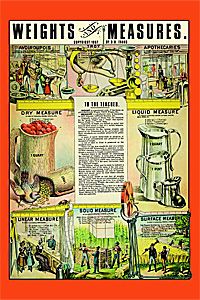Many myths swirl around the metric system and U.S. involvement with it. Let's dispel a few. First, the relationship between themetric systemand the United States dates back to the 18th century, not the 1970s. Second, all countries have either fully adopted or legally sanctioned theInternational System of Units, orSI, the modern form of the metric system. That includes the U.S., Liberia and Myanmar, three countries often listed as the sad-sack metric losers. Finally, a country doesn't simply "turn on" a brand-new system of weights and measures. Even France, the brainchild behind decimal-based measuring, adopted its own metric system in fits and starts. And all countries use legacy units alongside metric ones, at least in colloquial expressions.
Despite America's long history with SI units, measuring remains a mess in the States. Afootball fieldtraffics in yards while most footraces prefer meters. Mechanics measure the power of an automobile engine in horsepower (foot-pounds per second), but express the same engine's displacement in liters. Air pressure is denoted in all sorts of ways: pounds per square inch (or psi) for tire pressure, inches of mercury for surface atmospheric pressure and millibars for air pressure aloft.
Advertisement
And these are just a few examples. In theU.S. Customary System, or the inch-pound system, more than 300 different units exist to measure various physical quantities. Many of those units use the same name but have very different meanings. On the U.S. Metric Association Web site, contributor Dennis Brownridge identifies at least nine different meanings for the unit we know as a "ton": short ton, displacement ton, refrigeration ton, nuclear ton, freight ton, register ton, metric ton, assay ton and ton of coal equivalent.
To understand why the U.S. doesn't use the metric system in its commercial activities and everyday life, it helps to look at a brief history of how the European system of measurement came to U.S. soil.
Advertisement







